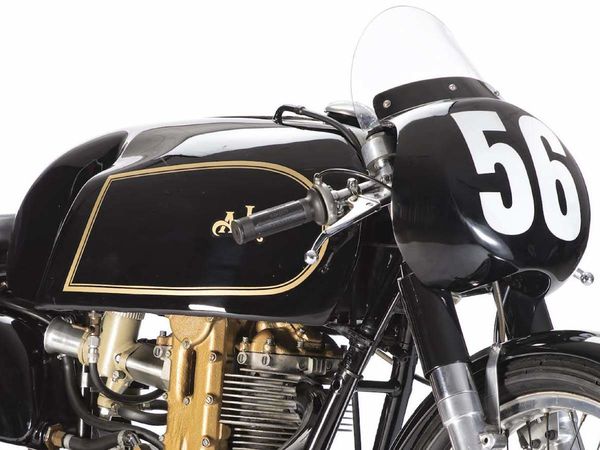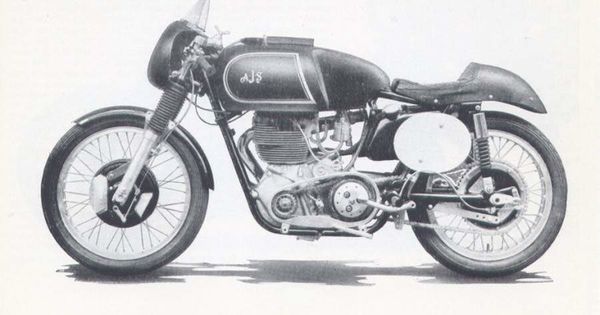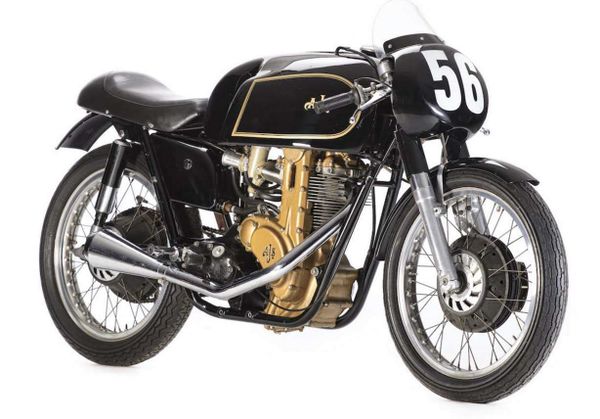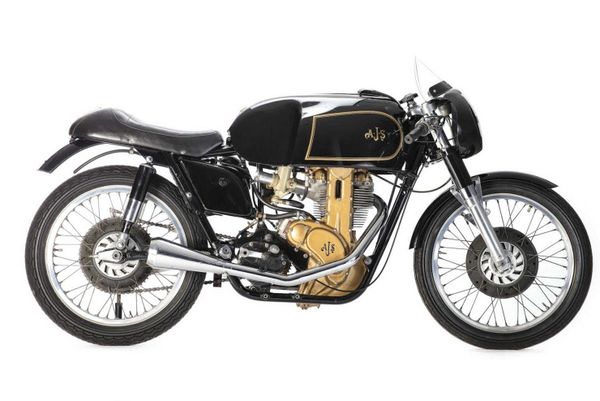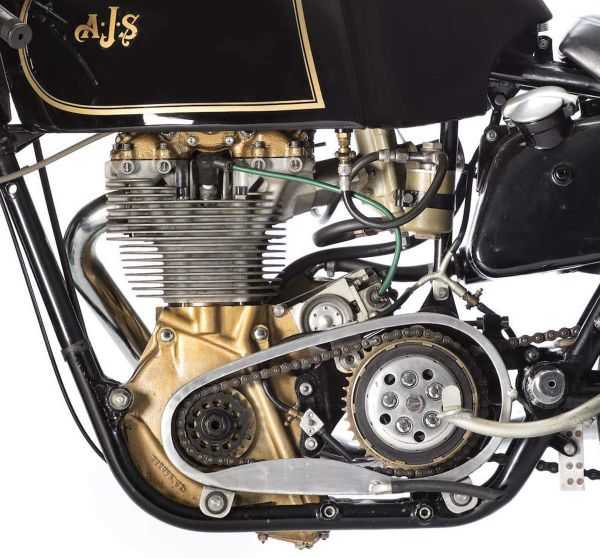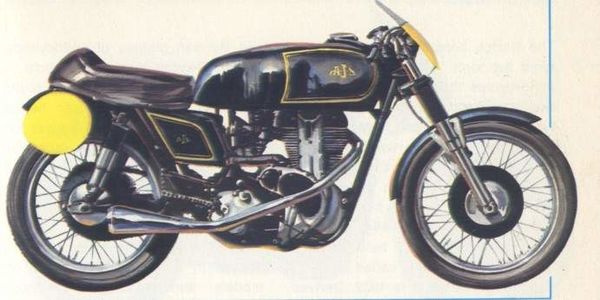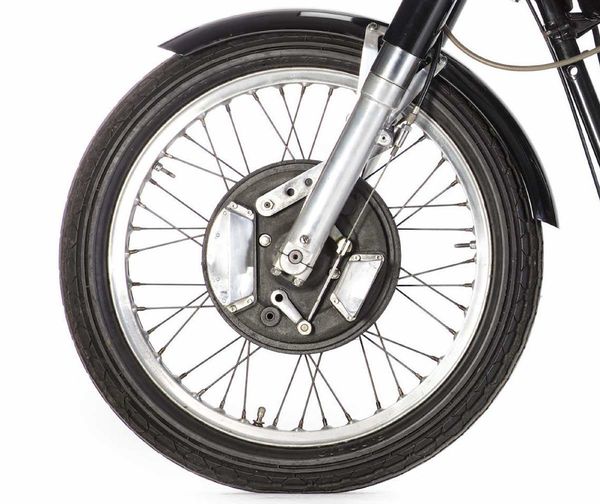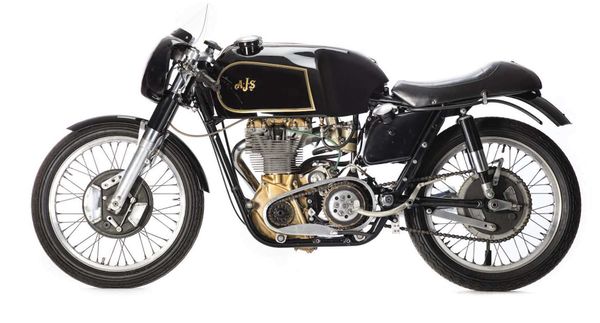AJS R
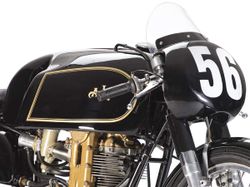 |
|
| AJS R | |
| Manufacturer | |
|---|---|
| Weight | |
| Manuals | Service Manual |
Photos[edit | edit source]
Overview[edit | edit source]
AJS 7R Racer Boy
AJS 7R Racer Boy 1957
While the AJS 500 Porcupinea motorcycle with a two-cylinder
enginewas winning world championships, the racing department of the company had
not forgotten the single-cylinder engine with single-shaft chain distribution.
The 1927 prototype was quite unlike the new model.
The AJS 350 single-cylinder was put back in the field in 1948.
It was called the 7R Racer Boy. The outstanding British racing ace Ceslie Graham
rode it to first place in the 1950 Swiss Grand Prix and to second place in that
year's Italian Grand Prix.
AJS technicians had little to do with the 500 in 1952, so they were able to
devote more time to the 7R. A radical change was introduced in the engine
design. All that remained of the old model (bore and stroke: 74 mm. x 81 mm.;
about 30 h.p. at 7,000 r.p.m.) was the general look and the single-shaft
overhead distribution. The new engine had three valvestwo for exhaust and one
for intake. The valve controls were unusually complicated but worked very
efficiently.
The AJS 350's best performance was its victory at the 1954
Junior Tourist Trophy, where it was ridden by the New Zealander Rod Coleman.
Subsequently AJS withdrew from racing, but for several years it sold a fine
racing motorcycle known as the Racer Boy, with a more powerful engine than the
three-valve model.
Motorcycle: AJS 7R Racer Boy Manufacturer: A. J. Stevens,
Wolverhampton Type: Racing Year: 1957
Engine: AJS single-cylinder, four-stroke, single-shaft overhead distribution,
chain-operated. Displacement 349.2 cc. (75.5 mm. x 78 mm.)
Cooling: Air
Transmission: Four-speed separate
Power: 37 h.p. at 7,600 r.p.m.
Maximum speed: About 115 m.p.h.
Chassis: Double cradle, continuous, tubular. Front and rear, telescopic
suspension
Brakes: Front and rear, side drum
AJS 7R 1961
1961 A.J.S. 7R. Pre-war 350 c.c. o.h.c.
racing A.J.S. machines were I_Igenerally identified by the coding R7. When the
racing "350" was
reintroduced in 1949 the name was revised to 7R, which retained the link with
the model's ancestors whilst proclaiming that it was new. In fact, the only
thing the power unit really had in common with the pre-war machine was that its
camshaft was driven by a chain.
In 1949 the 7R (soon dubbed the "Boy Racer"a
name now lost) looked surprisingly similar to the 1961 versionalthough very
few, if any, parts remained the same over the period. It already had the duplex
frame and swinging-fork rear suspension of the type used in 1961, although many
alterations were made in the intervening years to ensure that the machine's
handling kept pace with developments.
Alterations made for 1961 included the
replacement of the two springs formerly used in each telescopic fork leg by a
single multi-rate spring with damping characteristics altered to suit. Rubber
"bellows" were fitted to keep out dust and dirt and the fork travel was slightly
increased. To match up with the altered front suspension the rear Girling legs
had different damping and were individually tested and matched in pairs. A
larger air scoop helped cool the front brake more efficiently.
All these changes were embodied in the G50, as
was a reshaped timing chest to tuck the exhaust pipe farther in; to make the
similarity even closer, the 7R was fitted with a 3-00 x 19 in. tire at the front
and a 3-50 X 19 in. at the rear, as on the "500".
Improvements to the engine of the 7R included a
modified piston to give a 12:1 compression ratio (to take full advantage of the
100 octane fuel used) and the power output in the "useful" range of revs varied
from 33 b.h.p. at 6,000 r.p.m. to a peak of 41-5 b.h.p. at 7,800 r.p.m.
Some trouble had been experienced with gearboxes
getting over-hot in previous years, so to reduce the running speed of this
component
the 7R was fitted with a 22t. final drive sprocket for 1961, instead of 2it. as
before. The engine sprocket was dropped from 23L to 22t. to retain the status
quo at the back wheel. Output of the 7R, one of the four British "production
racers", was limited to sixty in 1961.
BRIEF SPECIFICATION
Engine: single-cylinder 350 c.c. o.h.c; drive to camshaft by chain.
Ignition: Lucas magneto.
Transmission: chains via four-speed gearbox.
Frame: duplex cradle with single top-tube; rear suspension by pivoting-fork
controlled by Girling hydraulically damped units.
Forks: "Teledraulic" telescopies with hydraulic damping.
Images source Bonhams
